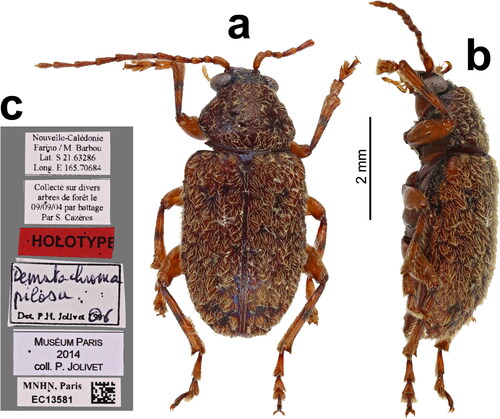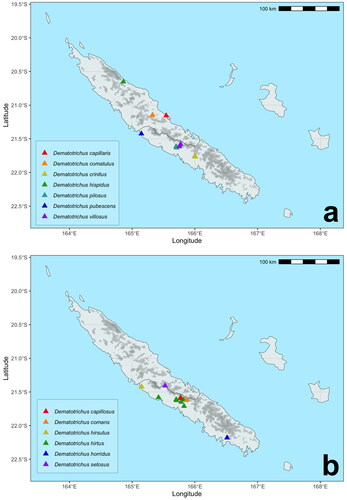Figures & data
Table 1. Samples, including the species code number in Papadopoulou et al. (Citation2013), JGZC voucher number and provenance of specimens yielding mtDNA sequences (with accession numbers) for phylogenetic assessment in Dematotrichus gen. nov.
Fig. 1. Maximum likelihood tree of cox1 and rrnS data obtained from specimens morphologically similar to Dematochroma pilosa Jolivet, Verma & Mille and ascribed to the new genus Dematotrichus gen. nov. in this work. Bootstrap support numbers above 70% are shown next to the respective node and terminals are labelled with the species names proposed in this work. Asterisks identify when these specimens are selected as species holotypes. The inset shows an optimal ML tree with a single representative of the species considered in this work (voucher no. of specimen selected in brackets), except for D. hirtus sp. nov., paraphyletic for mtDNA, and it is treated as the best current hypothesis for the species tree of this group.
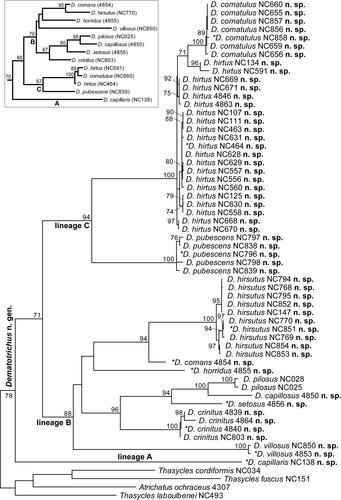
Table 2. Results of species delimitation within Dematotrichus gen. nov. based on an optimal ML topology obtained from mtDNA sequence data and the implementation of a Poisson Tree Processes branching model. The likelihood and posterior probabilities for data partitioning produced identical supports and are given together with the grouped samples, represented by JGZC voucher numbers.
Fig. 2. Dorsal views of the male holotype and one female paratype of Dematotrichus hirtus sp. nov. (a), the male holotype of D. pubescens sp. nov. (b), the male holotype of D. capillaris sp. nov. (c), the male holotype and one female paratype of D. comatulus sp. nov. (d), and the male holotype and one female paratype of D. villosus sp. nov. (e).
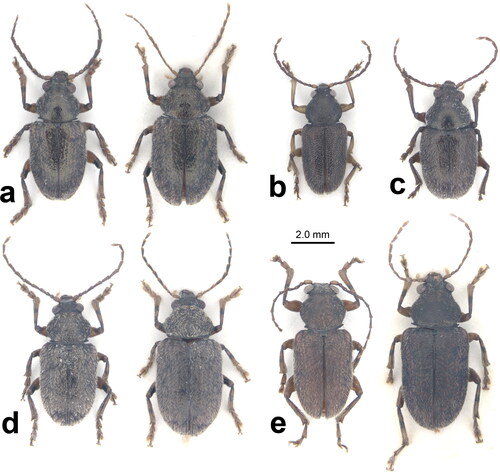
Fig. 3. Lateral and apical dorsal views of the penises of Dematotrichus capillaris sp. nov. (a), D. comans sp. nov. (b), D. comatulus sp. nov. (c), D. crinitus sp. nov. (d), D. hirtus sp. nov. (e), D. villosus sp. nov. (f), D. pubescens sp. nov. (g) and D. hirsutus sp. nov. (h). All penises drawn at the same scale.
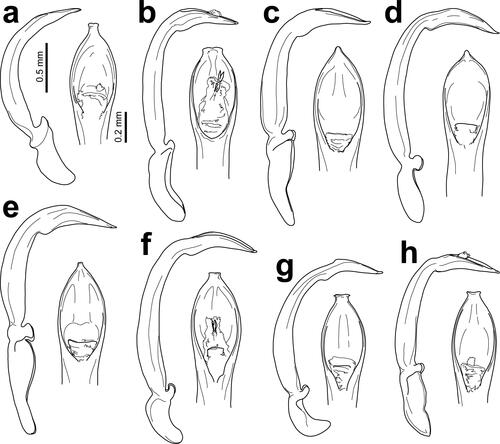
Fig. 5. Dorsal views of the male holotype and one female paratype of Dematotrichus hirsutus sp. nov. (a), the male holotype and one female paratype of D. crinitus sp. nov. (b), the female holotype of D. capillosus sp. nov. (c), the male holotype of D. comans sp. nov. (d), the female holotype of D. horridus sp. nov. (e), and the female holotype of D. setosus sp. nov. (f).
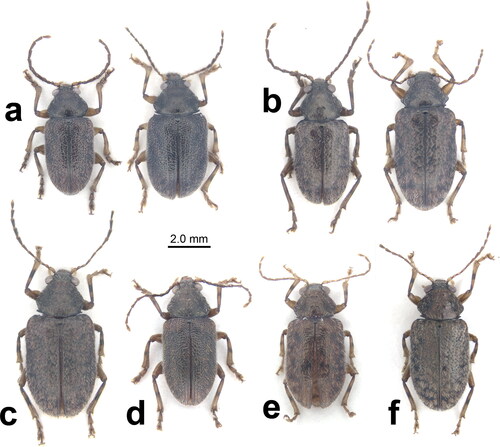
Fig. 6. Spermathecae of Dematotrichus capillosus sp. nov. (a), D. comatulus sp. nov. (b), D. crinitus sp. nov. (c), D. hirsutus sp. nov. (d), D. hirtus sp. nov. (e), D. horridus sp. nov. (f), D. pilosus (Jolivet, Verma & Mille) (g), D. setosus sp. nov. (h), and D. villosus sp. nov. (i). All spermathecae drawn at the same scale.
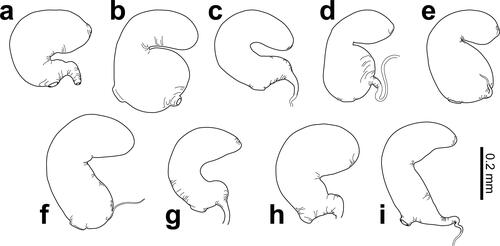
Fig. 7. Dorsal (a) and lateral (b) views of the male holotype of Dematotrichus pilosus (Jolivet, Verma & Mille) and accompanying labels (c).
